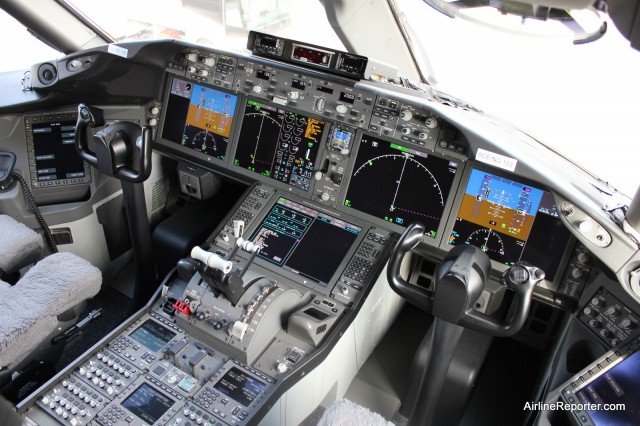
787 cockpit showing TCAS on the Multi-Function Display – Photo: AirlineReporter
A few months ago, a near-collision between two Boeing 757s off the coast of Hawaii was in the headlines. This event was particularly noteworthy because of the emergency descent made by United Airlines Flight 1205, which descended over 600 feet in a matter of seconds, terrifying passengers and sending items flying in the cabin. The pilots on the United flight were alerted to the oncoming traffic, and took action based on their Traffic Collision Avoidance System (TCAS).
History of mid-air incidents and TCAS mandate
Although TCAS systems are a (relatively) recent development in airline cockpits, the need for such systems was recognized long ago. On June 30,1956, a mid-air collision occurred at 20,000 feet between a United Airlines DC-7 and a TWA Lockheed 1049 over the Grand Canyon in northern Arizona. This incident, which resulted in 128 fatalities, served as a wake-up call for the aviation industry. Prior to the collision, ’œbig sky theory’ was the prevailing notion – that two aircraft flying in three-dimensional space were very unlikely to collide. Following this incident (which also led to the creation of the FAA), research began on developing collision avoidance systems.

Coming in for a landing – Photo: Graeme J W Smith
Lunchtime ’“ I arrive at Airport Road in Warwick, having driven past the usual airport entrance and around the end of the field. There are hangars behind the fence, a big ’œLearn to Fly Here’ sign on the end of the large hangar. A trail of little yellow airplanes painted on the sidewalk leads to the school door in the old control tower building. I go through the door. A counter ’“ I’m immediately greeted by a young guy whose name badge said Chris. There are aviation prints, flags from around the world from people who learned at the school, a case with headsets and aircraft models, some seats, and magazines.
We do some paperwork. Chris detects my Scottish accent. He will need to perform a background check on me before I am ever able to solo. A legacy from 9/11. I explain I’m actually an American and produce a US Passport. Clearly this has just saved a ton of extra paperwork. Big smile from Chris. We talk about – what else – flying. My instructor is finishing up with the last student ’“ he will be right with me.
Someone appears through a door telling the person who is clearly a student what they will do next time. I’m introduced to Greg. He snags me a guest headset from the school’s loaner pile, grabs a flight box for an aircraft, and takes me down to the classrooms on the side of the hangar. Each desk has a computer, books, and some aviation print or similar. We sit down at his and go over what is about to happen. We are cautiously sounding each other out. We turn to the computer and get a volume of information from it (don’t worry, it gets easier with time) weather, standard briefing, radar picture, METARS, TAF’s, TFR’s and NOTAMS all written in code and requiring interpretation. I note the website we are using for later study. We do this before EVERY flight. Especially TFR’s ’“ Temporary Flight Restrictions ’“ they can pop up at a moment’s notice and leave you grounded or in big trouble if you fly.
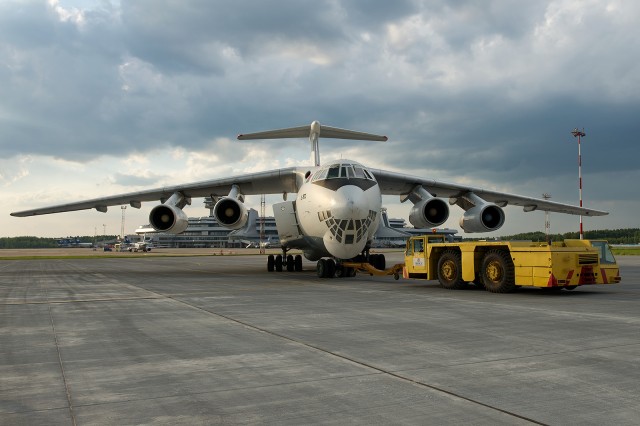
RubyStar Airlines operates numerous IL-76TDs, but I only got to fly on EW-78836 – Photo: Bernie Leighton | AirlineReporter
What’s better than flying on an IL-76MD like I did in North Korea? Flying on an IL-76TD somewhere outside of the most restrictive, hostile-to-photographers country on Earth, obviously.
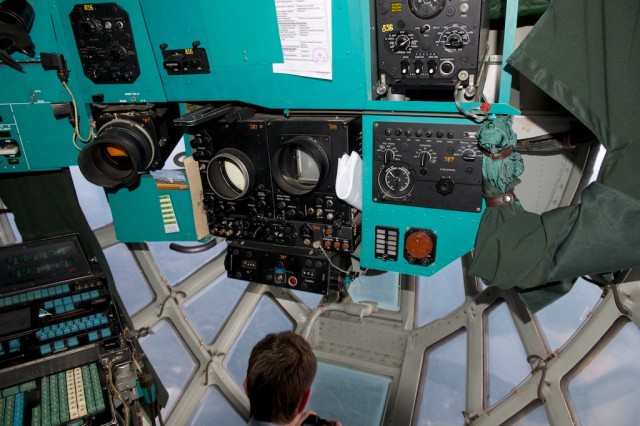
Inside the Navigator’s station of an IL-76TD (in flight) – Photo: Bernie Leighton | AirlineReporter
So, you probably want to know what an MD does differently than a TD. Letters and a lack of observer’s post/tail gunner in the rear area under the tail. For a civilian IL-76TD, it is faired over. Sometimes, this fairing is done crudely – indicating MD-to-TD conversion most likely sometime after the collapse of the USSR. That’s really it. They’re the same in every other way. Same Soloviev engines, same flight deck, same lavatory nook.
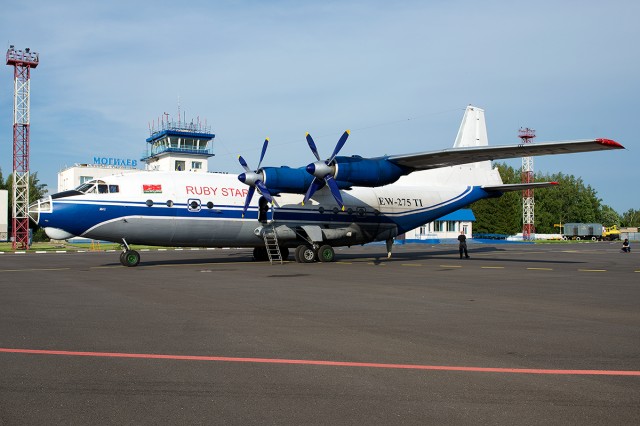
Our Antonov AN-12 ride for the day – Photo: Bernie Leighton | AirlineReporter
Yes, you read the title correctly. Mostly.
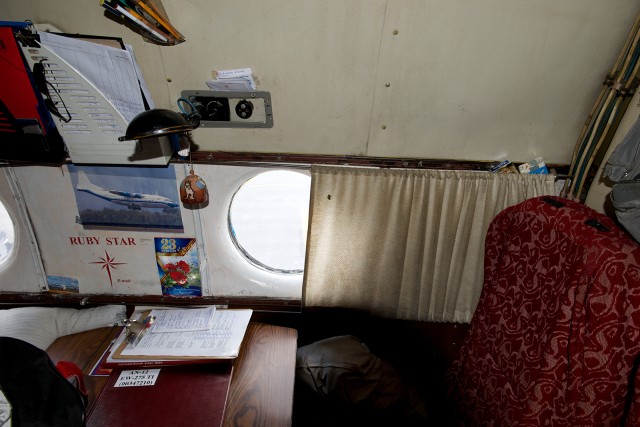
The crew rest “Business Class” area of an AN-12 operated by RubyStar Airlines – Photo: Bernie Leighton | AirlineReporter
It’s not technically business class. It’s the crew rest area. As you can see, it looks like it belongs on either a Soviet fishing trawler or submarine.
Even with my widest lens, I could not get a photo of the bathyscaphe-like curved office to cargo hold join. But the adjective of submarine-like is really all one can say. But I recently got to experience flying in this special “Business Class,” and of course wanted to share my adventure.
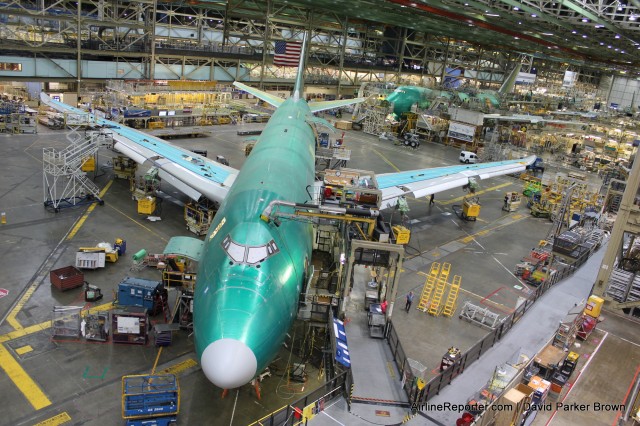
The money shot: 747 line inside the Boeing factory
Back in the 1960s Boeing made a big gamble. They decided to build the world’s largest airliner, the Boeing 747 Jumbo Jet. To build such a beast, they would need a large facility. After careful consideration, Boeing decided to build a large factory in Everett.
Since the first 747 rolled off the line in 1968, every other 747 has been built under the same roof. Even today, the 747-8 is built in the same factory.

In case you didn’t know the aircraft type, there is a large sign on the wall.
Although Boeing offers public tours of the facility, they do not allow cameras. I was lucky enough to participate in a media event and take photos of the 747 line in the factory and I wanted to be able to share. Enjoy…







